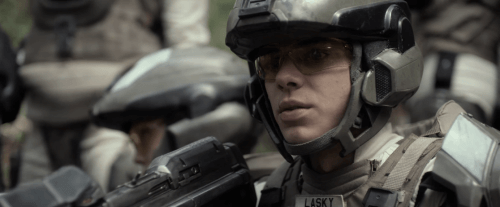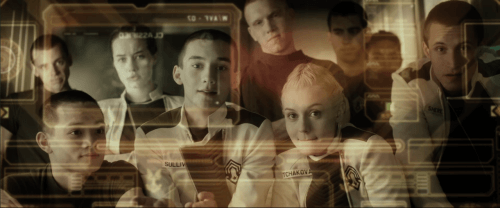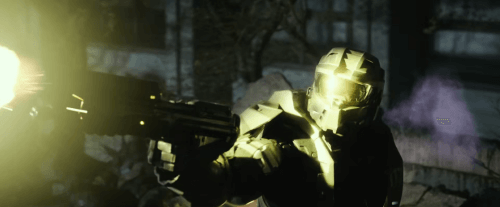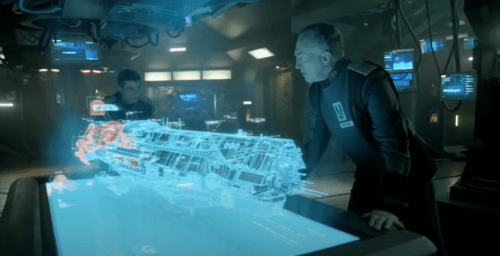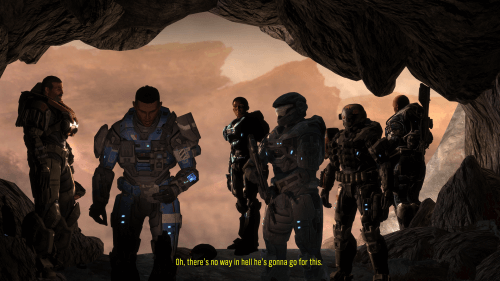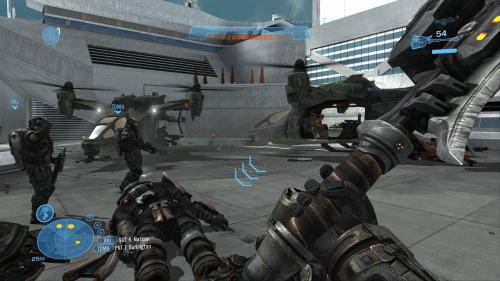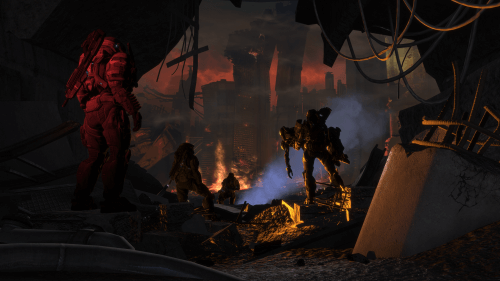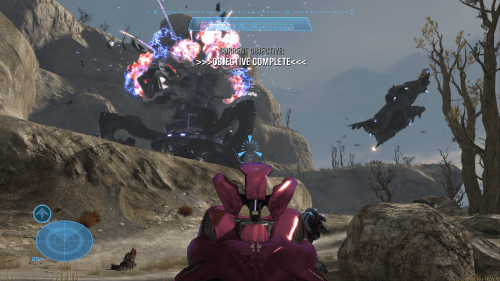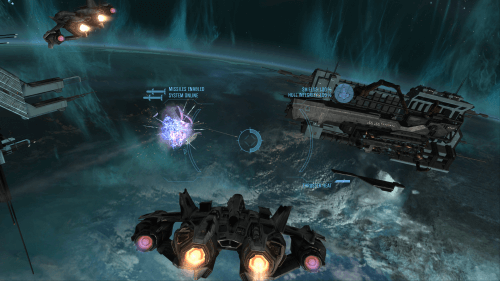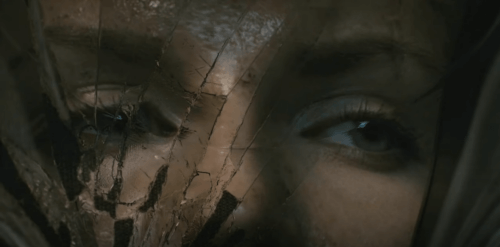The original Halo trilogy had been wrapped up for over 5 years and Bungie’s last two Halo releases, excellent as they were, were side stories. Now with Halo 4 we were getting an actual sequel, but the first crafted entirely by 343 Industries. Could they execute at anywhere close to Bungie’s level? What new ideas would they have to push the series forward? Most importantly to many fans, what would become of our beloved Master Chief?
As with the last several games, I’d really only played through Halo 4’s campaign once, at launch, though unlike those games I didn’t come away with an extremely positive impression of it. Instead, as I alluded to in my original brief mention of it here, I mostly appreciated it for simply allowing me to revisit a franchise I loved. While I did a fair amount of random matchmaking early on, the days of spending countless hours playing splitscreen and LAN games with family and friends were ancient history. Without those kinds of more enduring memories, Halo 4 is where the series stopped feeling quite so special to me. On top of that, for years now whenever I thought about its campaign I’d often remember it as a bit of a tedious slog. Oof!
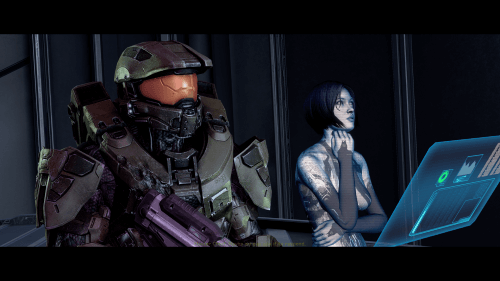
“Master Chief and Cortana, 2012 style.”
As with almost everything else I’ve covered as part of Halo Fest 2020 up to this point, I replayed Halo 4 on “Heroic” difficulty as part of the Xbox One’s Master Chief Collection on my Series X. The MCC version of the game doesn’t receive much of an upgrade but, as with Halo: Reach, Halo 4 was already an incredible looking game in the first place. In fact, I’d commented that Reach might have been one of the Xbox 360’s best looking games, and while I think I still favor it artistically, Halo 4 surpasses it.
While Halo 4’s graphics might have been a technical feat, some major aesthetic shifts were less positively received. Bungie tweaked their designs with almost every iteration of the series but 343 took it a lot further. Front and center, Master Chief’s iconic armor was given a major facelift, with a far more futuristic design yet a more gritty and realistic texture and a darker color scheme. Cortana’s new design was particularly jarring, with her model looking far more voluptuous and, well, straight up nude. While I wouldn’t go as far as to say that I dislike her new look, I can’t help but find the choice just a bit questionable. On the sound design front we no longer have Marty O’Donnell working on the soundtrack for the first time in a mainline Halo game. That’s not to say the new soundtrack, which goes in some very different directions, is anywhere close to being bad, but it feels entirely underutilized and nowhere near as notable a part of the whole experience as it did in, say, Halo 3 for example.
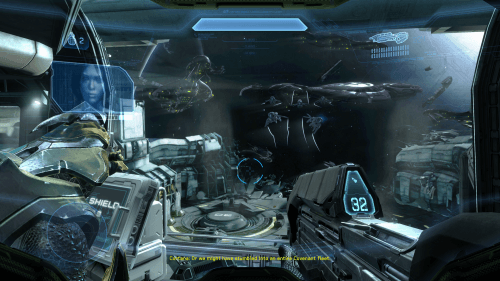
“Not really what you want to see first thing after waking up…”
As with Halo: Reach, the campaign features a nice variety of different environments and of course, per Halo tradition, multiple vehicle-centric sections including a couple featuring the new Mantis mech suit. There’s also a level that feels very similar to the Falcon level from Reach where you instead pilot a Pelican gunship, and in a similar throwback to Reach, one that feels like a Star Fox level in which you fly a Broadsword fighter. There’s also a section featuring something of a super-sized Elephant from Halo 3’s Sandtrap multiplayer map called a Mammoth.
One issue with Halo 4’s level design is that there is a major lack of large open areas, especially problematic in those vehicle dominant sections. Really, as a whole the campaign’s levels are rather linear, complete with invisible walls and out-of-bounds kill timers. If you don’t attempt to explore or get too creative you may not even notice, but those hardcore Halo players who like to wring every last drop of gameplay out of each game will definitely be turned off by this. I was also surprised to see some QTE-like interactions very early in the campaign. These don’t make a reappearance until the final boss fight, and while QTEs don’t particularly offend me, having a game that doesn’t really rely on them end with one did feel a little anticlimactic.
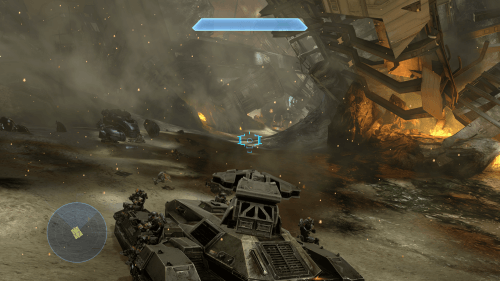
“The only thing better than a tank is a tank filled with Spartans.”
I already mentioned the Mantis and the Broadsword, so yes, Halo 4 absolutely continues the trend of featuring a variety of new and updated vehicles and weapons. In fact, it goes even further than previous games by making changes to practically every piece of equipment at your disposal. They’ve also been renamed to designate that, canonically, they’re supposed to be different, newer versions of the classics we know and love. There’s also some new additions, like the Covenant Storm Rifle, the UNSC SAW, and the UNSC Railgun. More notably, there’s the huge addition of a whole arsenal of Promethean weapons. For the most part, these feel like counterparts to UNSC and/or Covenant weapons, but given that ammo can be fairly scarce and you’ll be fighting Prometheans most of the time, you’ll likely end up using them whether you want to or not, and you may not, as several of them are fairly lackluster. I’m looking at you, Pulse Grenade!
Halo 4’s equipment system has also seen some changes. While it works more or less the same as Reach’s Armor Abilities, it now includes several totally new abilities like the Autosentry, Hardlight Shield, Thrusters, and Promethean Vision, in addition to some Reach favorites like my beloved jetpack. The ever controversial Armor Lock is gone, while Sprint is now a standard ability anyone can do.
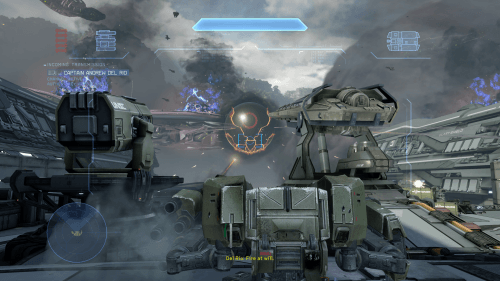
“The new Mantis is badass, though not badass enough to shoot down the Cryptum, unfortunately.”
If you’ve not played Halo 4, you’re probably wondering what in the hell a “Promethean” is. In short, they’re a new variety of enemy that you’ll be fighting along with our old Covenant pals. There are three main varieties of Promethean. Crawlers, canine-like cannon fodder enemies that sometimes appear in pretty large groups. Watchers, which are flying Sentinel-like enemies that aren’t a huge source of damage but project shields onto their allies and can even resurrect other dead Prometheans. They also annoyingly love to dodge and dart away before you’ve managed to finish them off. Finally, there’s Promethean Knights. An Elite or Brute-level enemy, these assholes are bullet sponges who can wield a variety of weapons, including some high damage ones. They also love to dodge and even teleport away mid-fight, recharging their shields, which is goddamn annoying when you’re trying to finish one off. More frustratingly, these guys almost always have Watchers around them and can even spawn them themselves, which means extra shields you have to contend with and the possibility of coming back to life after you’ve killed them. Argh!
Prometheans are, in short, not fun. I feel like 343 was trying to capture the more interesting aspects of fighting the Flood, yet missed the mark. Knights might be fine if they only made rare appearances, but in some sections they’re absolutely everywhere. Eventually towards the end of my playthrough I’d developed the reckless but effective tactic of charging them with a high rate of fire weapon and trying to empty a magazine directly into their faces before they could teleport away. Those types of weapons tend to burn through ammo though, and, as mentioned, ammo for UNSC weapons is fairly scarce which makes the best candidate for this the Promethean Suppressor. Much more importantly, the shielding and resurrection abilities of the Watchers means they’re always going to be your priority target, and that leads to favoring mid to long range so you can pick them off from safety, which is, yeah, not the Suppressor’s strength. Beyond these issues, I wouldn’t say Halo 4 isn’t overly difficult, but when you add in the fact that so many areas are, yet again, set up like Firefight style wave defense arenas it can be damn tedious.
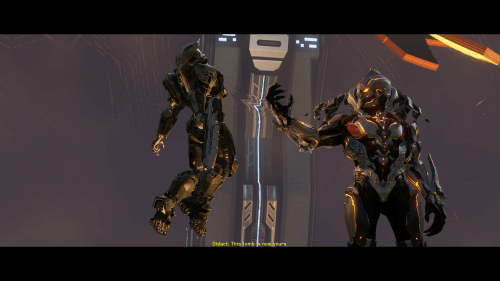
“100,000 years of self-reflection and yet, still a dick.”
While Halo 4’s story is probably better than most Halo fans give it credit for, I personally don’t love the direction they took it in. First we have the new antagonist, the Didact. My problem with this plotline is that it totally kills the enigmatic nature of the Forerunners and their murky relationship with humanity (at least, as presented in-game.) With that, 343 Industries has had to really complicate the story to work this all in. Backstory that lived mostly in other media is now vital to the games and, worse yet, is clumsily presented, with the bulk being explained in a single, absolute lore-dump of a cutscene. Finding the hidden terminals on every level and watching their associated cutscenes is practically required to really understand what in the hell is going on, at least if you haven’t been keeping up with the books and the comics.
Hinted at in Halo 3, the other piece of the story is Cortana’s emerging rampancy. It’s a minor part of Halo 4’s plot overall, but it definitely affects how the Chief and Cortana are characterized. Beyond being more chatty than ever before, their flirty quips take on an almost awkward tone, as if 343 is suddenly trying to present their relationship as somehow… romantic?! Still, despite the risk of Master Chief developing a personality, I don’t feel like anything he says is out of character. He’s still the same stoic man of action. His actions, on the other hand? It didn’t occur to me until I wrote up the plot summary for Halo 4 for my next post, but he and Cortana fail constantly in this game. Practically every major story beat involves them utterly fucking up. Well, I guess that’s one approach to humanizing a character!
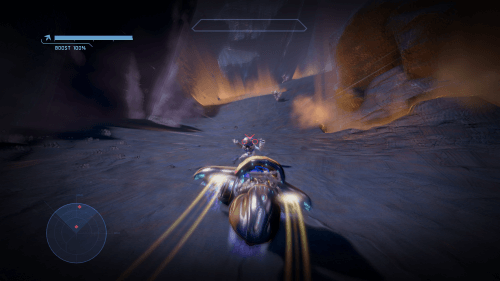
“Warthog run? Nah, how about a Ghost run? Bop!”
If it’s not obvious by this point, Halo 4 is a divisive game. A lot of the Halo fanbase considers it to be utter trash. As with Halo: Reach, some of that comes from the multiplayer community, who felt like things like custom loadouts and ordinance drops were desperate attempts to chase the Call of Duty crowd. While there is no shortage of genuine criticism of the game to be made, there’s also a lot of silly toxicity around the 343 Industries handoff that muddies the water. The ironic part is that much of what fans bash 343 over in Halo 4 is them continuing exactly where Bungie left off with Halo: Reach. Personally, replaying it again, I enjoyed it a lot more than I’d remembered. In fact, I suspect it was Spartan Ops, not the Halo 4 campaign itself, that soured my impressions of the game so much. I’ll be talking about that in my next post.
Bonus live-action media time! “Scanned” is a trailer for Halo 4 released just after Forward Unto Dawn started being released, also on Halo Waypoint. It depicts Master Chief being restrained by some sort of field and being scanned by what we’ll come to find out is the Didact. As the scan probes his mind, it zooms into scenes showing John as a child being abducted by ONI, his later SPARTAN-II augmentation, and being suited with his Mjolnir armor. It then fast forwards to Master Chief engaging a group of Promethean Knights before being subdued. This one is definitely very cool!
